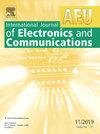A Compact 2T1C and Cryo-2T1C CMOS Memristor Emulator for Neuromorphic and Quantum Computing
IF 3
3区 计算机科学
Q2 ENGINEERING, ELECTRICAL & ELECTRONIC
Aeu-International Journal of Electronics and Communications
Pub Date : 2025-02-01
DOI:10.1016/j.aeue.2025.155683
引用次数: 0
Abstract
In this a new 2T1C (2 Transistors and 1 Capacitor) memristor emulator design which is compact and energy efficient is proposed. It achieves a maximum operating frequency of 150 MHz. The simple circuit design leads to a power consumption of and occupies a minimal area of at room temperature (RT). The chip area and power consumption of 2T1C memristor emulator are 4 and 74 times lesser than the PMME/NMME memristor emulator respectively. In addition to that, a Cryo-2T1C memristor emulator is proposed and its performance is analysed at cryogenic temperature (4.2 K). The Cryo-2T1C could be considered as the first Cryo-CMOS memristor emulator, which has better memristive characteristics at 4.2 K. The Cryo-2T1C memristor has a power consumption of W and occupies an area of and also operates at a frequency of 150 MHz. To ensure the correctness of memristive characteristics, the proposed designs are verified at various frequencies and voltage levels at RT and 4.2 K in UMC 65 nm process technology. The proposed 2T1C and Cryo-2T1C emulator designs are able to retain the Pinched Hysteresis Loop (PHL) for different process variations and mismatches in both RT and 4.2 K. Hence, the proposed designs are suitable for low power and high frequency applications.
用于神经形态和量子计算的紧凑2T1C和Cryo-2T1C CMOS忆阻器仿真器
本文提出了一种紧凑、节能的2T1C(2晶体管1电容)忆阻器仿真器的设计方案。最大工作频率可达150mhz。该电路设计简单,功耗为13.1μW,在室温(RT)下的最小占地面积为1.25μm2。2T1C忆阻器仿真器的芯片面积和功耗分别比PMME/NMME忆阻器仿真器小4倍和74倍。此外,提出了一种Cryo-2T1C忆阻器仿真器,并对其在低温(4.2 K)下的性能进行了分析。Cryo-2T1C可以被认为是第一个Cryo-CMOS忆阻器仿真器,在4.2 K下具有较好的忆阻特性。Cryo-2T1C忆阻器功耗为47μW,占地3.1μm2,工作频率为150 MHz。为了确保记忆特性的正确性,在UMC 65nm工艺技术中,在RT和4.2 K的不同频率和电压水平下验证了所提出的设计。所提出的2T1C和Cryo-2T1C仿真器设计能够在RT和4.2 K下保留不同工艺变化和不匹配的压缩滞回线(PHL)。因此,所提出的设计适用于低功率和高频应用。
本文章由计算机程序翻译,如有差异,请以英文原文为准。
求助全文
约1分钟内获得全文
求助全文
来源期刊
CiteScore
6.90
自引率
18.80%
发文量
292
审稿时长
4.9 months
期刊介绍:
AEÜ is an international scientific journal which publishes both original works and invited tutorials. The journal''s scope covers all aspects of theory and design of circuits, systems and devices for electronics, signal processing, and communication, including:
signal and system theory, digital signal processing
network theory and circuit design
information theory, communication theory and techniques, modulation, source and channel coding
switching theory and techniques, communication protocols
optical communications
microwave theory and techniques, radar, sonar
antennas, wave propagation
AEÜ publishes full papers and letters with very short turn around time but a high standard review process. Review cycles are typically finished within twelve weeks by application of modern electronic communication facilities.

 求助内容:
求助内容: 应助结果提醒方式:
应助结果提醒方式:


